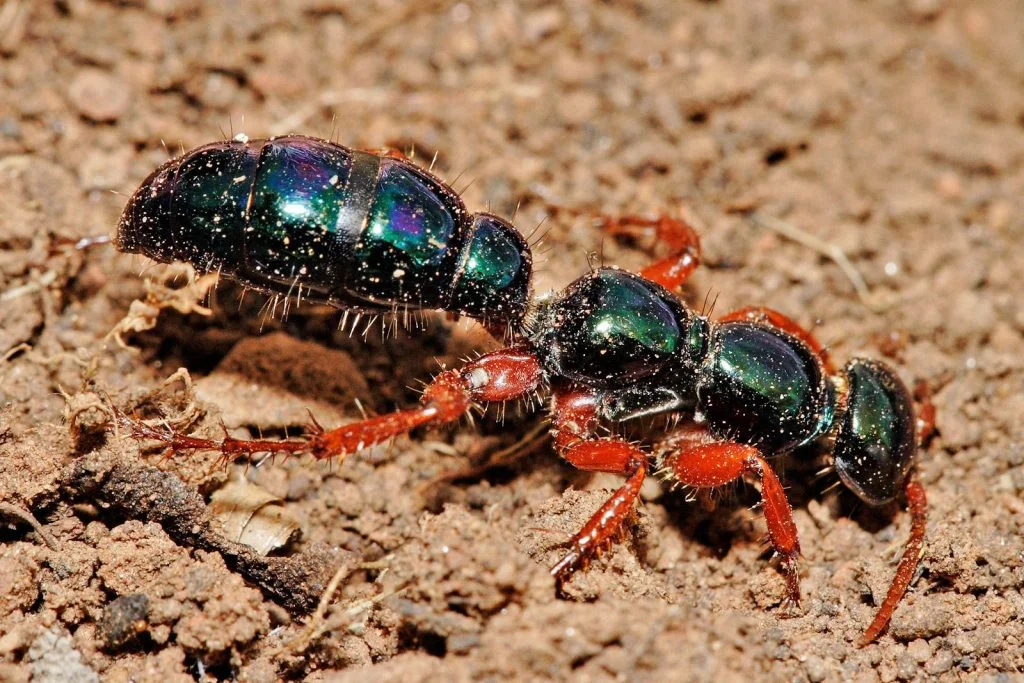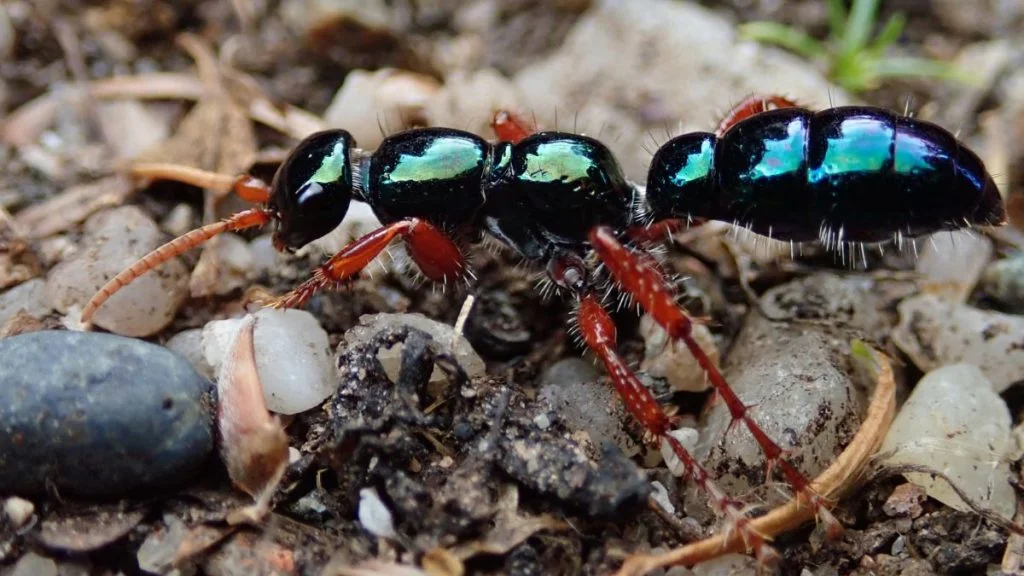Here’s the first bombshell; despite its appearance and name, the blue ant is not an ant. It is called an ant and bears a strong resemblance to the standard ant, but it is a different insect of its own.
This alone is enough to spark interest in the minds of any animal enthusiast out there.
So what is a blue ant? If it isn’t an ant, then what is it? And why do we call it an ant?
What’s more, colored insects are unnerving to many people, so one would wonder whether this species is harmless to humans.
Should we ignore their existence around us or seek to annihilate them?
All these and more would be answered as we unveil the 10 interesting facts about blue ants.
Blue Ant Scientific Classification

| Kingdom | Animalia |
| Phylum | Arthropoda |
| Class | Insecta |
| Order | Hymenoptera |
| Family | Thynnidae |
| Subfamily | Diamminae |
| Genus | Diamma |
| Species | D.bicolor |
| Scientific name | Diamma bicolor |
| Size | 2.5cm |
Intriguing Facts About Blue Ant You Need to Know
1. The blue ant is a wasp
Far from being an ant, the blue ant is a wasp. It is often described as a large, solitary, and parasitic wasp and is a species of flower wasp from the family Tiphiidae.
The name was possibly given to it because of its appearance. They are also known as blue-ant or bluebottle ant.
2. Australia is their home
While people in different places are just getting to know this species, it originated in Australia and can be found there.
More specifically, it is a native of the states of Tasmania, Victoria, New South Wales, and South Australia.
3. The males and females differ
Male blue ants are generally smaller than females and are less aggressive.
While the females are as long as 25mm, the males fall smaller at 15mm. Males have wings, but the females are wingless and dwell on the ground.
4. They have a subfamily with no siblings
This wasp species is the definition of solitary amongst insects, and nowhere is that more apparent than its subfamily categorization.
The blue ant is classified under the Diamminae subfamily and is the only insect under that family. Its unusual nature is possibly the reason for that.
5. They are solitary insects

Unlike other wasp insects that move in groups, blue ants are loners. They form no colonies or nests and survive independently of each other.
You might often find them crawling around bushes and trees, especially in Australian urban areas.
Mating is possibly the only time these insects have any rapport with themselves.
6. They mate really “high” in the air
These insects mate in the air, with the male lifting the wingless female, despite her larger size (the males come with a touch of chivalry, apparently).
The females harvest the eggs and are also in charge (read: breadwinners) of getting appropriate prey for the little one as it grows.
Blue ants have a life cycle similar to other insects: egg, larvae, and adult.
7. They are omnivores
Blue ants can spell disaster for some insects as they are strong predators, using stings to paralyze the insect for their young ones.
The insects remain alive and paralyzed while the young larvae feed on them (good horror genre material, isn’t it?).
However, this wasp species isn’t known to be aggressive like bees. The adults feed on nectar from plants and generally live like monks.
8. They have a defense mechanism against predators
While this species isn’t aggressive, they defend themselves when the need arises. They use the same sting on predators and inject venom.
This is quite similar to many other insects like bees and some ant species.
These insects also consider humans predators, so you should be wary of attacking a blue ant, a bee, or any insect.
9. They are relatively harmless to humans unless you’re allergic
Are blue ants poisonous?
The female blue ant can sting if disturbed. Their sting can be painful, causing a severe burning sensation and swelling, and may lead to itching for days.
In rare cases, it can lead to a severe reaction known as anaphylaxis.
But compared to other insects like bees, this species is harmless.
They hardly attack en masse, so you wouldn’t have to deal with multiple stings after a single encounter. Simple home treatments suffice.
However, if you were stung multiple times, go to a hospital. The same applies to allergy sufferers. If one sting causes swellings and fever, it needs medical attention.
10. Overall, they are beautiful pests
The colors are fine, and this insect is unique, but not everyone is comfortable with having them around.
They can be risky if you have kids running around, so for many individuals getting rid of these insects is crucial.
You can make use of insecticides or contact the nearest pest control services.
Related Questions
Is the blue ant rare?
The blue ant is common in Australia, but not easily seen in other parts of the world. While it may not be at risk of extinction, this insect is considered rare.
Is the blue ant an ant?
The blue ant looks like an ant and is called an ant, but in reality, it is a flower wasp, not an ant. Its similarities don’t change the fact.
What is the difference between a blue ant and an ant?
The main difference between a blue ant and an ant is in the antenna. Their abdomen also looks different from the regular ant. There’s the blue color as well, which isn’t a normal color for ants.
Where can you find blue ants?
Blue ants are seen in woodlands, usually in urban areas close to human dwellings. They could reside in a backyard, or anywhere with bushes and forests.
Wrap Up
There are several interesting facts about blue ants, just like other insects.
Though it is rare with little information on it, it has its part to play in the overall ecosystem.
The males differentiate from females with wings and smaller size, and the insect is known to be solitary, though a strong predator when it needs to feed its young.
Though not aggressive, it will defend itself when it perceives any threat with stings, making it a pest to many people.
Check out these interesting articles:
Featured Image Credit: DMVPhotography/Getty Images
